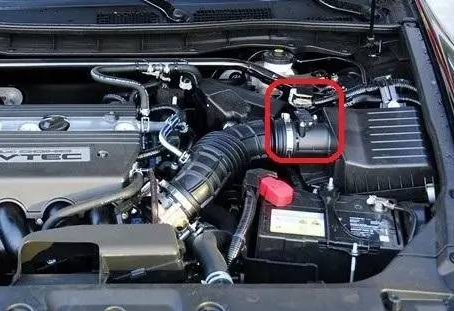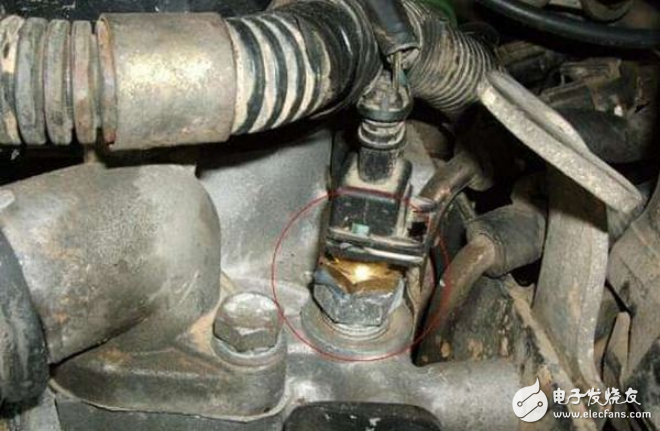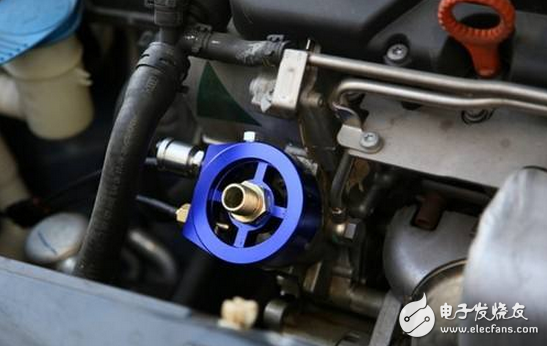Sensors are used in many places. Nowadays, with the maturity of technology, scientific progress, and because temperature and humidity are closely related to both physical quantities and actual people’s lives, the integrated temperature and humidity sensor Will be generated accordingly. Temperature and humidity sensor refers to a device or device that can convert temperature and humidity into electrical signals that can be easily measured and processed. Temperature and humidity sensors on the market generally measure temperature and relative humidity. Temperature and humidity sensors are the most widely used in the work of real-time recording of temperature and humidity changes in many fields. Not only that, they can also escort the engine.
Various engine temperature indicators are an important reference for engine control decision-making. Changes in temperature will affect air density, fuel atomization effect, and lubrication system effect. The engine control system needs to be adjusted in time according to changes in these conditions to ensure the engine Work normally within the design range to improve performance and protect the engine.

The engine's main temperature sensors include intake air temperature sensor, water temperature sensor, and oil temperature sensor.
The intake air temperature sensor senses the temperature of the air entering the engine. The higher the temperature, the lower the air density, and the less air is drawn in under the same working conditions. We know that air volume is an important reference indicator for fuel ration, and the air-fuel ratio is rich and lean. The change directly affects the combustion effect of the engine, the performance of the vehicle, and the achievement of energy-saving goals. Therefore, the engine fuel injection system is generally equipped with an intake air temperature sensor at the front end of the intake pipe. Most models will use the intake air temperature sensor with an air flow meter. Or the intake manifold pressure sensor is integrated.
The water temperature sensor senses the temperature of the engine's cooling water. Too low engine temperature will lead to a decrease in lubrication effect and increase in wear. At the same time, it will also cause poor fuel atomization and increase fuel consumption. Too high engine temperature will also cause the lubrication effect to decrease, the friction force will double, and in severe cases, it will cause the moving parts to burn and fuse, which is a serious cause of engine damage. Generally, the engine will install one or two water temperature sensors on the cooling water jacket to detect changes in water temperature at all times and make adjustments or early warnings quickly.

The function of the oil temperature sensor is similar to that of the water temperature sensor. It is generally installed in the oil pan to sense the temperature of the oil. Some models are also integrated with the oil level and oil pressure sensors to monitor changes in the oil status and prompt warnings when abnormal.

In addition to intake air temperature sensors, water temperature sensors, and oil temperature sensors, there are of course various auxiliary temperature sensors such as EGR exhaust gas recirculation temperature sensors, ambient temperature sensors, etc. These temperature sensors are generally controlled by the temperature characteristics of the thermistor. As a result, the resistance value of the temperature change thermistor also changes, and the engine computer senses the temperature change and reacts by detecting the change in the resistance value.
USB4 specifies tunneling of:
USB 3.2 ("Enhanced Superspeed") Tunneling
DisplayPort 1.4a -based Tunneling
PCI Express (PCIe)-based Tunneling
Main Benefits of USB 4
The new USB 4 standard has three main benefits over prior versions of USB.
40 Gbps Maximum Speed: By using two-lane cables, devices are able to operate at up to 40 Gbps, the same speed as Thunderbolt 3. The data is transmitted in two sets of four bidirectional lanes.
DisplayPort Alt Mode 2.0: USB 4 supports DisplayPort 2.0 over its alternative mode. DisplayPort 2.0 can support 8K resolution at 60 Hz with HDR10 color. DisplayPort 2.0 can use up to 80 Gbps, which is double the amount available to USB data, because it sends all the data in one direction (to the monitor) and can thus use all eight data lanes at once.
Better Resource Allocation for Video, PCIe: In lieu of alternative mode where the other interface takes over the connection, USB 4 devices can use a process called "protocol tunneling" that sends DisplayPort, PCIe and USB packets at the same time while allocating bandwidth accordingly.
Usb4 Cable,Usb To Usb4,Usb 4 Cable,Usb 4 Wires
UCOAX , https://www.jsucoax.com